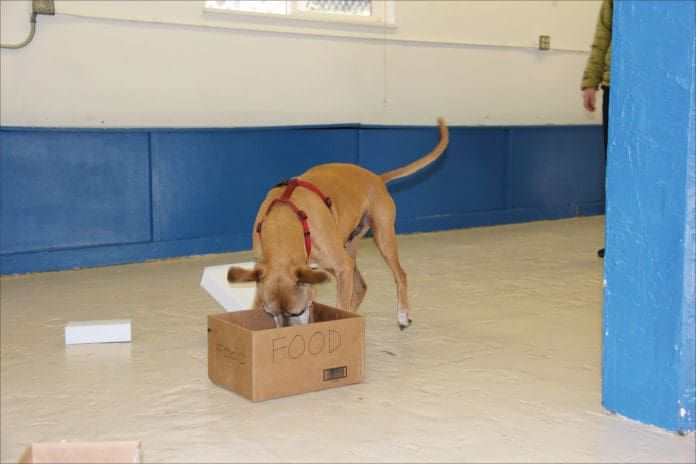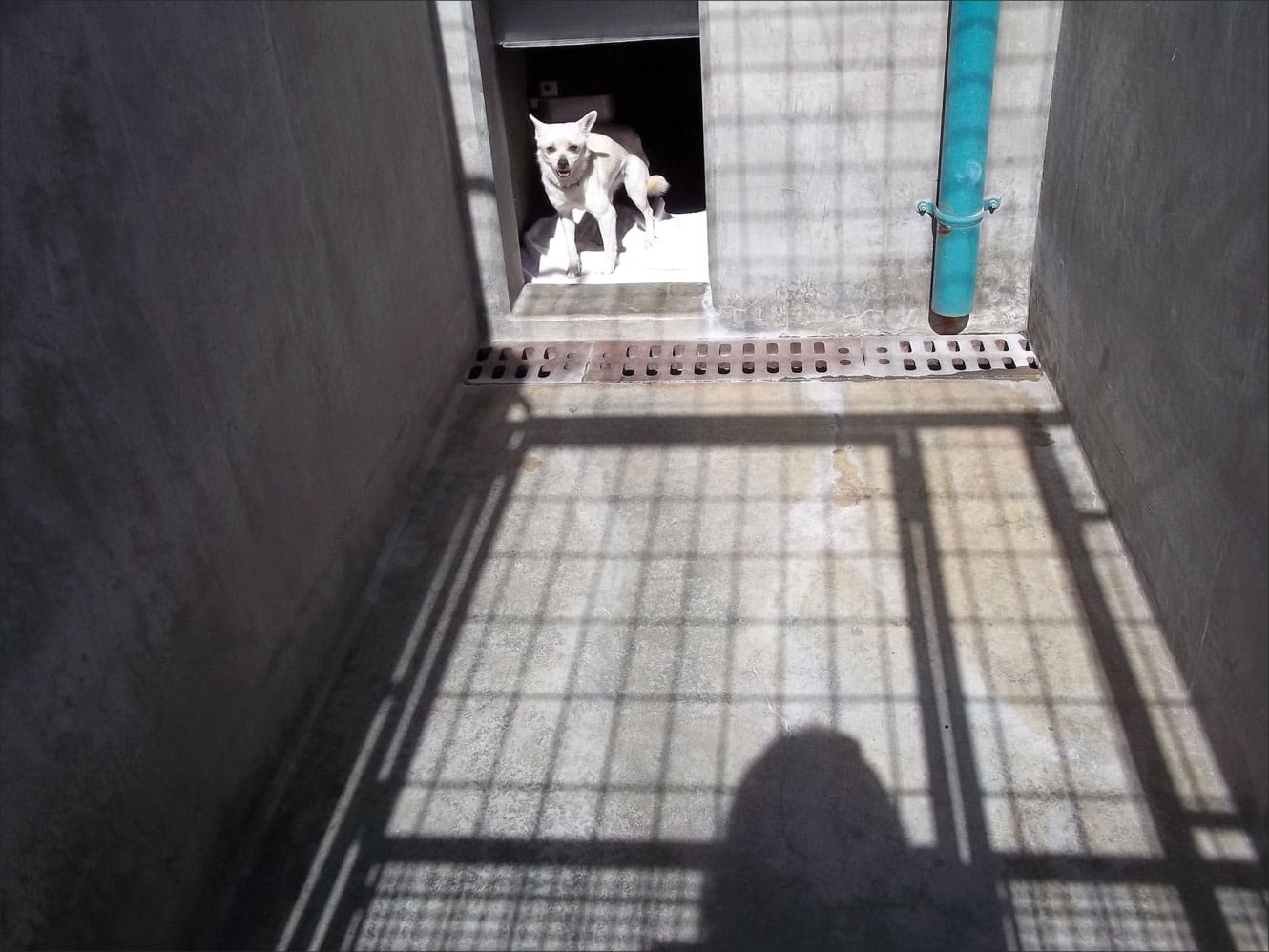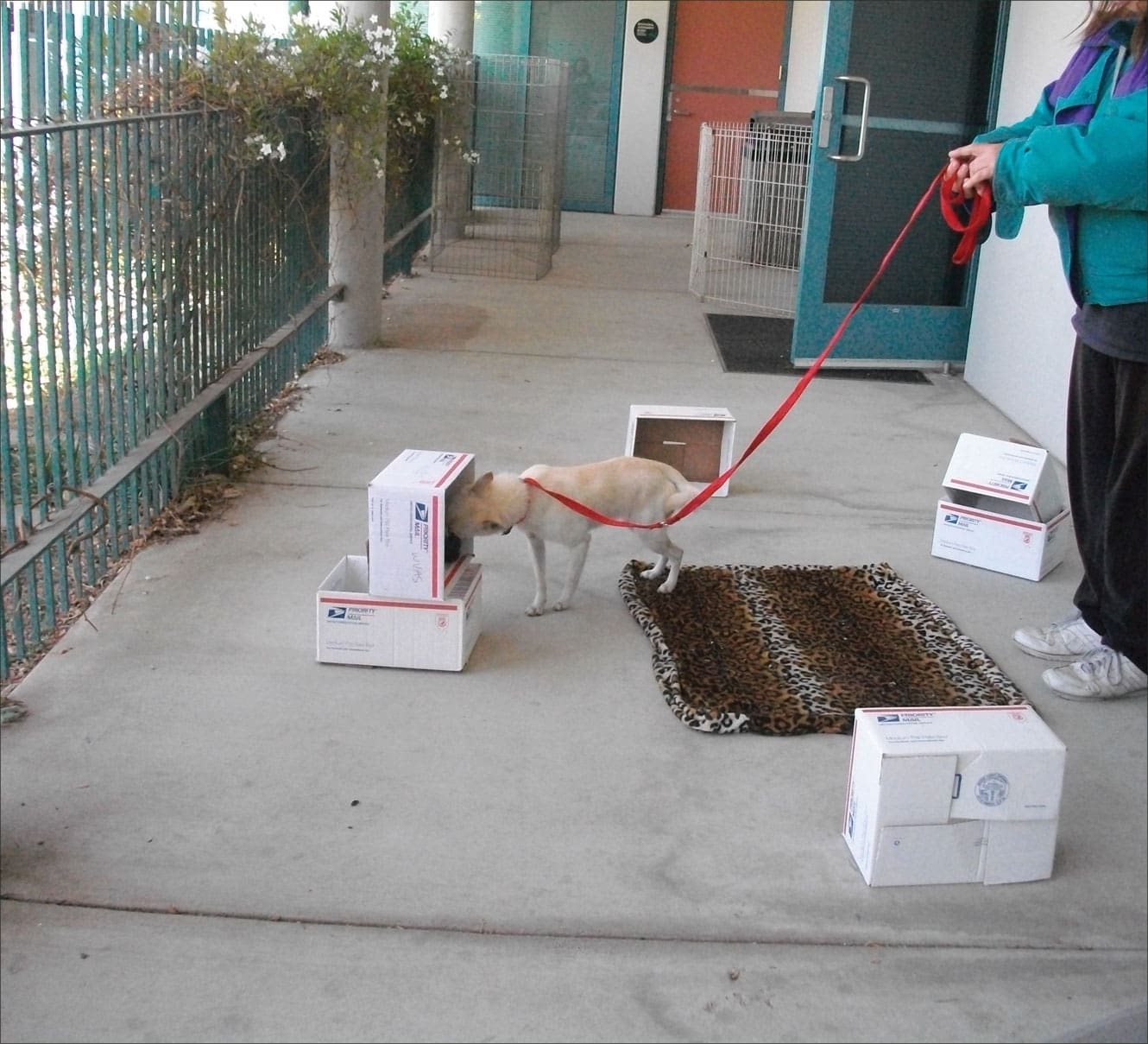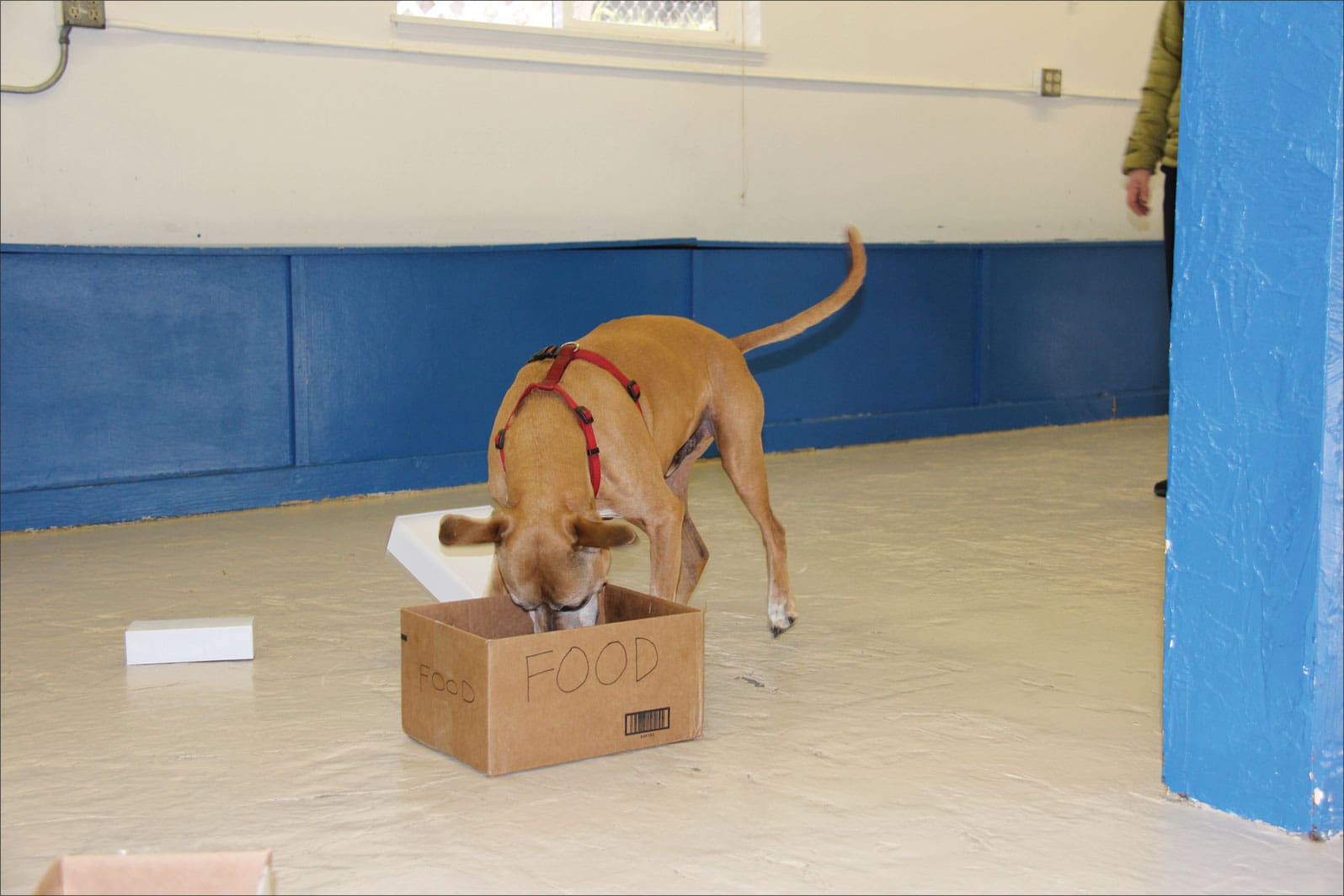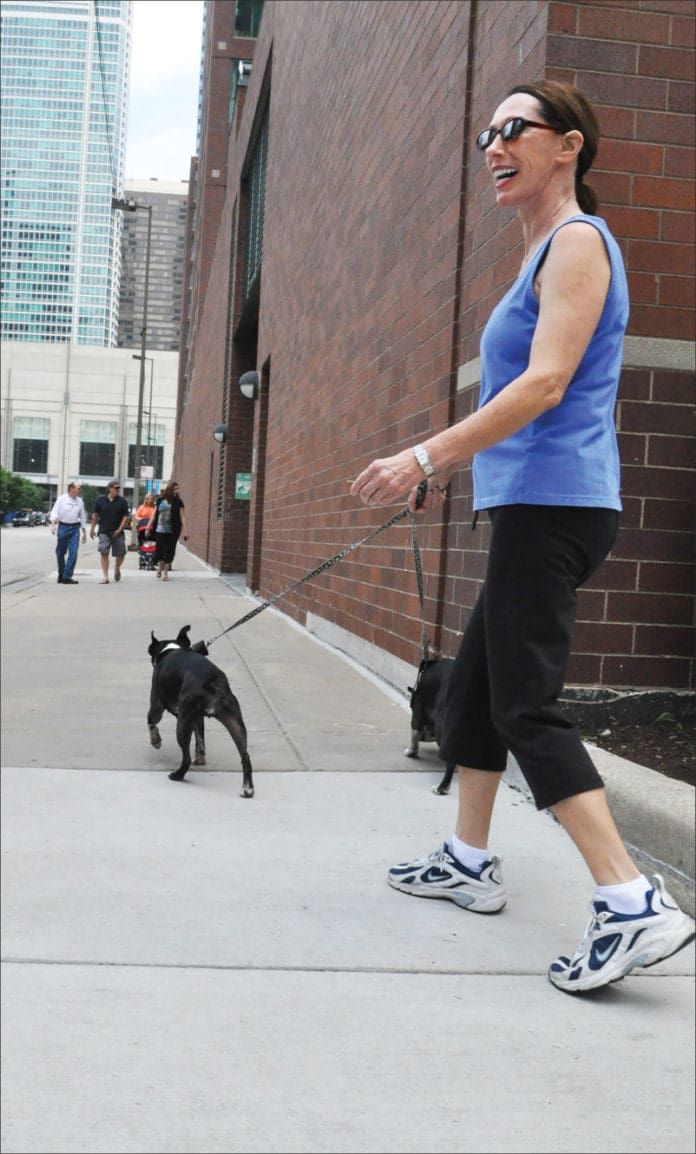I was watching a television show about a veterinary clinic the evening after completing an early draft of this article. One of the clients was a young man with a very sick dog, who lay at his feet, moaning softly. “He’s not himself,” the man said, his voice choked with emotion. “He’s hardly moving, and when he did move, it was like his joints weren’t working. He can’t control his bladder, he’s peeing all over.” Oh my gosh, I thought to myself, I know what’s wrong with that dog!
Legalization of medical marijuana in 18 states and the District of Columbia has been a blessing for many people, but it is also a concern for veterinarians. Marijuana ingestion can cause toxicity in dogs, and it’s more important than ever for vets to be able to recognize the signs of marijuana toxicosis now that recreational use has also been approved in two states.

Reports of dogs being affected by marijuana (Cannabis sativa) have been rising for a decade. The ASPCA’s Animal Poison Control Center received 309 calls about dogs consuming marijuana in 2011, compared to 96 cases in 2002. A recent study found that the number of dogs treated for marijuana toxicosis at two Colorado veterinary clinics quadrupled between 2005 and 2010 (medical marijuana was approved there in 2000). The number of cases of marijuana toxicosis at the two facilities increased from 1.5 to 4.5 and from 0.16 to 0.81 per 1,000 emergency cases during that period, indicating that this was not just a matter of seeing more patients in general.
It’s possible that the increase could be at least partly due to greater awareness of the possibility of marijuana toxicity among veterinarians, or greater openness from owners about the probable cause of their dogs’ symptoms.
Dogs can get into trouble after they raid their owner’s stash, eat food infused with marijuana, or munch on the plants as they’re growing. Even if you don’t have the drug at home, your dog could be exposed by eating something found in a park or on a walk. Dogs are the most commonly affected pets, accounting for 96 percent of 250 cases studied in 2002, but cats and other animals can also be affected (3 percent of those cases were cats). Signs can start within minutes or hours and can last for hours or days, partly because THC, the active ingredient in marijuana, can be stored in fat in the body.
Signs of possible toxicity
The mildest signs of marijuana ingestion in dogs include lethargy (sleepiness), reddened eyes from blood-engorged conjuctiva, disorientation, and other behavior changes, such as overreaction to touch, sound, or visual stimuli. Dogs may become agitated and hyperactive, or sedated.
More severe signs include ataxia (loss of balance, staggering, incoordination, difficulty walking), drooling, dilated pupils, vomiting, diarrhea, loss of appetite, and sometimes vocalization. A vet may find hypothermia (low body temperature), hypotension (low blood pressure), and tachycardia or bradycardia (fast or slow heart rate). In the worst cases, coma, seizures, and death can occur.
In one study done in 2004, neurologic signs, such as lethargy (or depression alternating with excitement), ataxia, and dilated pupils, were seen in 99 percent of dogs after ingesting marijuana. Gastrointestinal signs, such as vomiting and drooling, were seen in 30 percent of those dogs.
One classic sign observed in most dogs after marijuana ingestion is dribbling urine. Since it’s unusual to see a combination of urine dribbling with neurological symptoms in dogs, this can help to differentiate marijuana toxicity from other possible causes.
Fortunately, dogs can sleep off the effects most of the time. But since these signs can indicate other types of poisoning and medical conditions, it’s important to have your dog checked by a vet unless you know for sure what happened and your dog’s symptoms are mild.
Diagnosis
THC, the active ingredient in marijuana, can be easily detected in blood or urine, but most veterinarians do not have this test readily available to them. Other drugs and toxins can cause similar clinical signs, including stimulants, chocolate, opioids, anti-anxiety drugs, antidepressants, amitraz (found in the Preventic collar and some newer tick control medications), rat poison, antifreeze, and alcohol poisoning (which can come from consuming rotting fruit or bread dough).
Eating marijuana-infused goodies that are high in fat or contain chocolate may also increase the risk of digestive upset and pancreatitis. Blood tests can help to rule out causes linked to metabolic changes, and x-rays may be done to look for gastrointestinal foreign bodies or other abnormalities that might cause similar signs.
Treatment
If it has been less than two hours since the drug was ingested, your veterinarian may induce vomiting. Some veterinary resources recommend that vomiting should only be induced within 30 minutes of ingestion, as once clinical signs are seen, the anti-nausea effects of marijuana can make this difficult. Vomiting is also dangerous for dogs who are severely sedated, as it can lead to aspiration (inhalation of vomitus into the lungs).
Veterinarians can also give activated charcoal in liquid form to help reduce the amount of THC that is absorbed. After that, most dogs can just sleep off the effects, with full recovery within 24 hours. In rare cases, dogs may be unconscious for several hours to a few days. Supportive care given during this time may include a urinary catheter for cleanliness, and repositioning every few hours to avoid circulatory problems.
When signs are severe, such as an extremely slow heart rate, inability to swallow or stand, repeated vomiting, or hypothermia, your veterinarian may recommend hospitalization with intravenous fluids, anti-nausea medications, thermoregulation to control body temperature, and sedation, as needed. In the worst cases, a type of intravenous lipid therapy can be used to help remove the toxic substance from the blood.
Rarely, dogs can go into a coma and die due to heart failure or respiratory arrest. Aspiration of vomitus can also lead to serious breathing problems and even death. Two accounts of death due to marijuana ingestion occurred after the dogs ingested products made with marijuana-infused butter. One was a Schipperke who ate half a dozen chocolate chip cookies, and the other a Cocker Spaniel who ate half a pan of brownies, both made with butter that had been infused with THC. Both died despite receiving veterinary treatment.
Reports of amounts needed to cause toxicity vary. According to one study of 213 dogs who ingested marijuana, the lowest dose that caused clinical signs was 84.7 mg/kg (38.5 mg/pound, or about 1 gram per 26 pounds of body weight). This study further found that the onset of signs occurred in as little as 5 minutes and lasted anywhere from 30 minutes to 96 hours (4 days), with most signs occurring within 1 to 3 hours after ingestion.
Many sources state that the lethal dose is thought to be 1.5 grams of marijuana per pound of body weight, but the study above found that the highest reported dose was 26.8 grams/kg (12.2 grams, or almost half an ounce, per pound of body weight), and all dogs made full recoveries with appropriate treatment.
Honesty, best policy
For those who have marijuana in the home, it should be treated as any other medication or toxic substance and stored out of the reach of pets. If your dog shows clinical signs after possibly ingesting marijuana, be honest with your veterinarian about what may have happened. Even in states that have not yet legalized medical marijuana, veterinarians want to help your dog, not turn you in. It’s important for them to have all the information they need in order to properly diagnose and treat your dog.
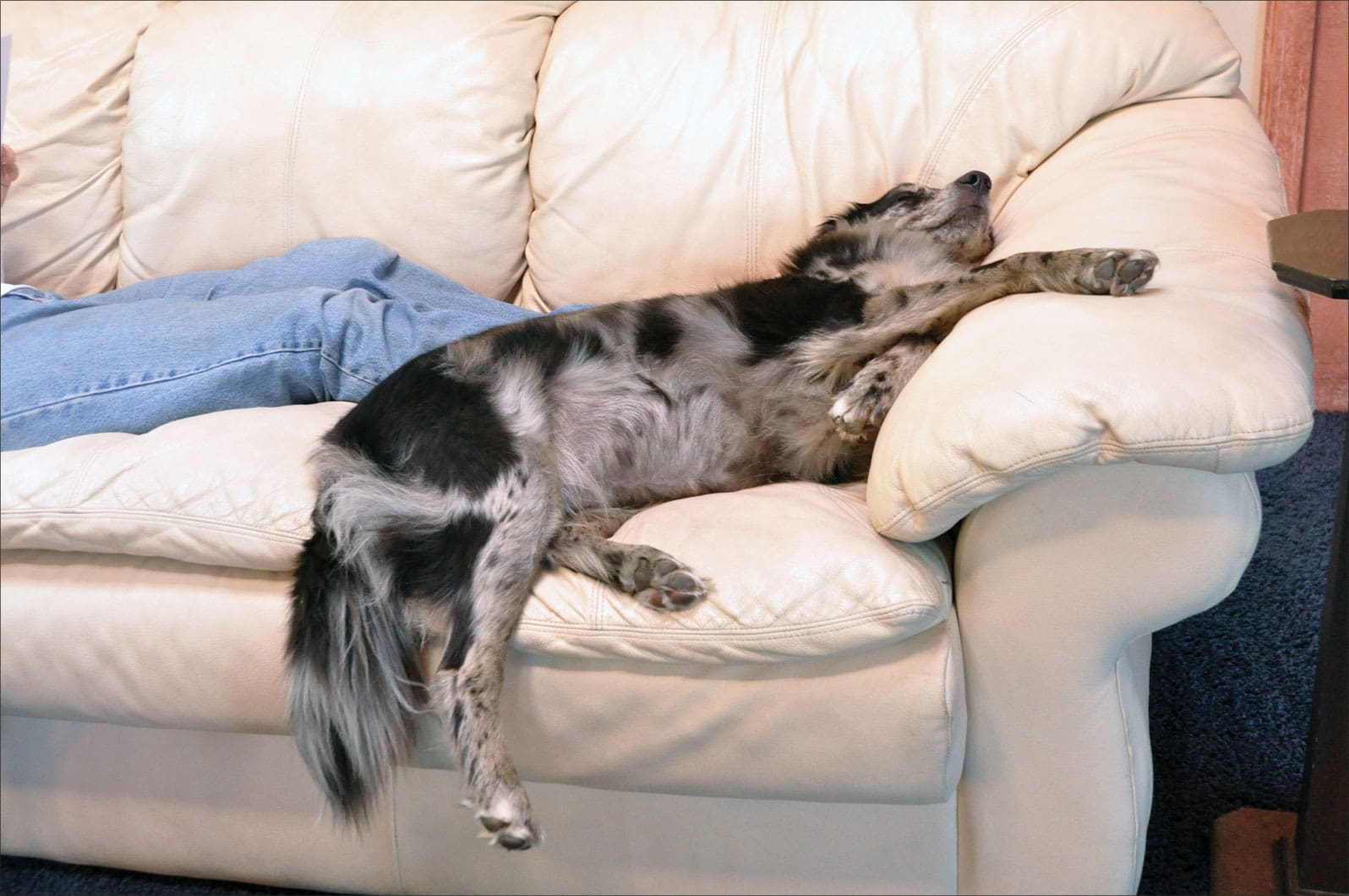
The veterinarian was very worried about the dog on the television show, but after blood and urine tests came back normal, and a bottle of pills that the dog might possibly have ingested were identified as antibiotics, which would not cause the symptoms seen, she questioned the owner more carefully about what else the dog could have gotten into. He admitted finding a chewed up cup that his roommate used as an ashtray after smoking marijuana, and the mystery was solved. Since the dog’s heart rate, respiration, and temperature were all normal, he was sent home to sleep it off, while his very relieved owner prepared to have a serious talk with his roommate.
What about Medical marijuana for dogs?
Marijuana can be toxic to dogs, but advocates say that it also has medicinal effects in pets similar to those found in humans. Medical marijuana may help with pain control, nausea relief, and appetite stimulation, while causing few adverse side effects, when used in appropriate dosages.
Most veterinarians want nothing to do with medical marijuana for pets due to its illegality (marijuana remains the target of federal laws even in states that have approved its use for medical or recreational purposes) and the dearth of clinical trials. But a few vets believe that marijuana can provide palliative care to reduce pain and suffering for some animals, and are hoping that medical marijuana may soon be available as a treatment option for pets.
Dr. Douglas Kramer, a veterinarian who works in the Los Angeles area, believes that “the combination of modern medications and traditional therapeutics produces the best clinical results.” He started Vet Guru, an online source of information and products relating to “fusion veterinary medicine,” integrating modern and traditional herbal therapies in a holistic approach. Dr. Kramer developed Rapid Dissolve Pet Strips, blends of herbal products with natural flavorings that dissolve in seconds in the mouth, where they are absorbed sublingually rather than through the stomach, making them more effective and quicker acting, as well as avoiding the potential for stomach upset. Vet Guru also offers other products via innovative delivery systems that ease administration.
Dr. Kramer’s interest in medical marijuana for pets started when his own dog, a Siberian Husky named Nikita, was suffering from cancer. Despite the use of all conventional pain control medication and therapies available, Nikita had reached the point where she spent most of her time lying on the floor, moaning. As a last resort, Dr. Kramer tried giving her a medical marijuana tincture in the hopes that it would improve her quality of life. The results were nothing short of amazing. Within hours of the first treatment, Nikita’s appetite returned and she appeared to be much more comfortable overall, with the moaning ceasing entirely. Of course, cannabis did not cure the cancer, but it afforded Nikita and her family several more months of quality time together.
Following Nikita’s death, Dr. Kramer dedicated himself to researching and documenting the therapeutic benefits of medical marijuana for pets for the benefit of his other patients. He founded Enlightened Veterinary Therapeutics in order to provide the same high level of palliative and hospice care for pets as for humans. Its stated goal is “relieving pain and suffering while enhancing the quality of life for pets and their families.”
As enthusiastic as he may be about the potential benefits of medical marijuana for dogs, Dr. Kramer is concerned about safety and efficacy of products developed without veterinary involvement. He is also concerned that pet owners are experimenting with the effect of medical marijuana on their pets. Dr. Kramer feels that clinical trials are needed so that veterinarians will know more about the effects of marijuana on pets. So far, the only trials that have been done on pets were those used indirectly for human studies, in which dogs and many other animals were found to have the same cannabinoid receptors as humans.
Dr. Kramer wants to see clear data in order to understand how marijuana may help relieve pain and suffering in dogs. He has interviewed dozens of owners who have reported improvements such as reduced anxiety and increased appetite, primarily in pets suffering from cancer. He is currently conducting a survey of owners who have used medical marijuana on their pets. (See http://vetguru.com/2011/10/15/pet-survey/ if you would like to participate in the survey or post its link.)
Cannabis has the potential for benefits beyond pain relief and appetite enhancement. There is evidence that, in humans, cannabinoids may help to control nausea and vomiting, reduce inflammation with less risk of gastrointestinal upset compared to non-steroidal anti-inflammatory drugs (NSAIDs), and reduce anxiety.
There is also evidence that cannabinoids may act synergistically with opioids, such as morphine, enhancing the effect of the pain narcotics, allowing them to be used at lower doses, as well as possibly mitigating some of their adverse side effects. In addition, new studies show promise for using topical, unheated cannabis to treat skin cancer. When it comes to topical treatment for dogs, however, additional risk arises from the potential for ingestion of toxic amounts of the drug.
It must be said that there is no reliable information about what dosage of marijuana is safe and effective for pets. This problem is further complicated by the wide variety of products, including flower buds, oils, tinctures, and other extracts, as well as the variation in strengths for each of these based on the strain of marijuana grown, the timing of the harvest, and the preparation of the medical product. Concentrated forms in particular can cause toxicity even in small amounts.
If your pet needs palliative or hospice care, Enlightened Veterinary Therapeutics offers consultations. While they cannot prescribe or provide medical marijuana for pets, they will help develop an individualized treatment plan that incorporates conventional and natural therapies.
Mary Straus is the owner of DogAware.com. She and her Norwich Terrier, Ella, live in the San Francisco Bay Area.



